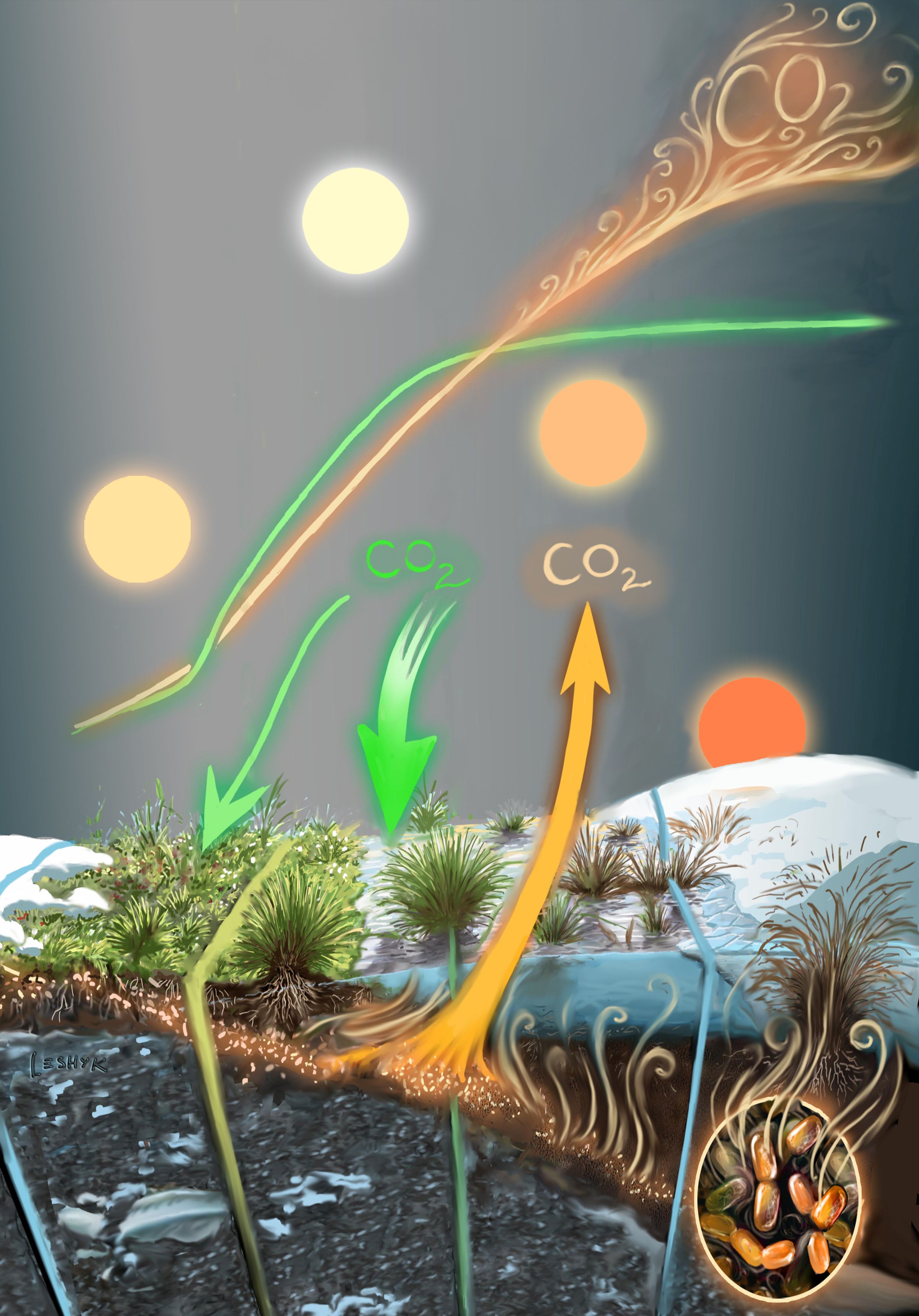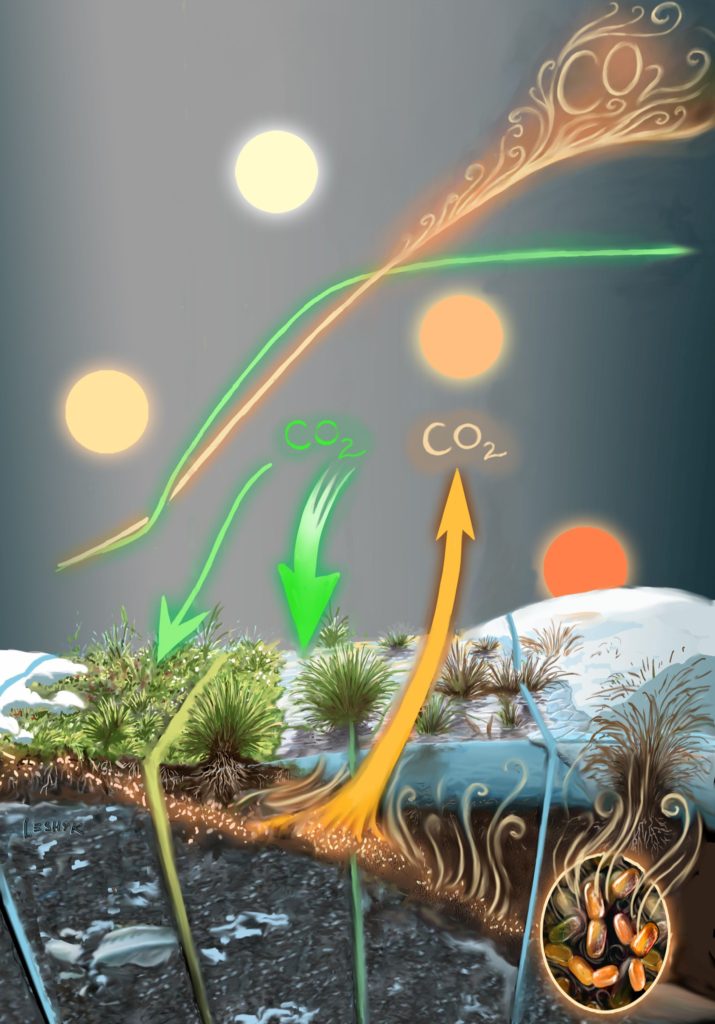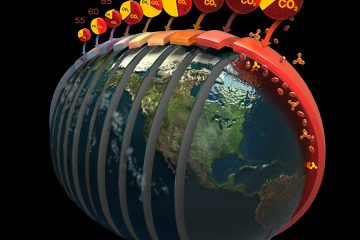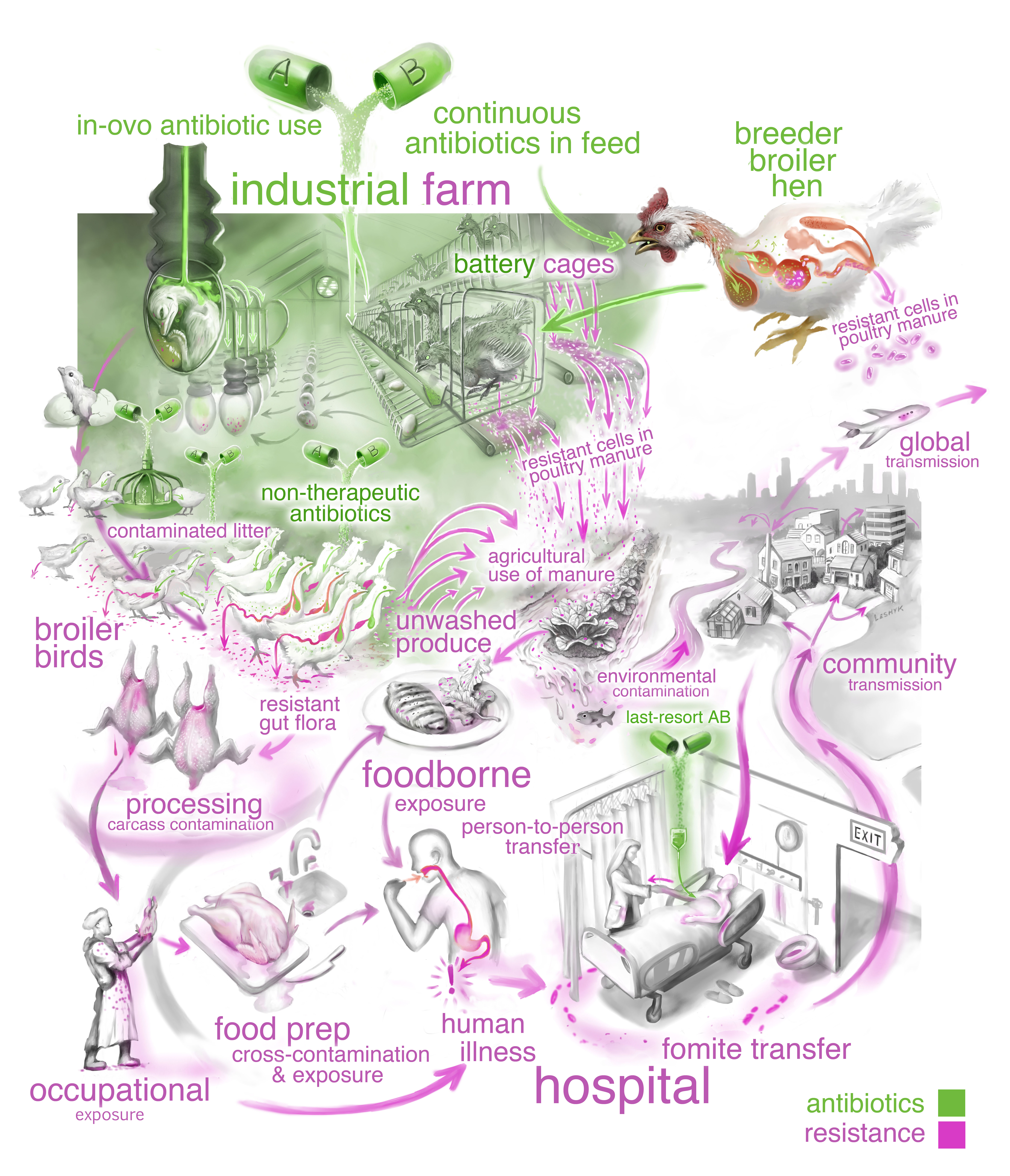Non-linear CO2 flux response to seven years of experimentally induced permafrost thaw


Permafrost, the “always-frozen” deep soil layers of the Arctic, naturally undergoes freeze-thaw cycles with the passage of the brief Arctic spring and summer, which thaws the uppermost layers and fosters a burst of tundra plant growth and pooling meltwater from thawed soil. For millennia, this cycle has re-frozen the soil in winter, with a net gain in permafrost as new plant matter adds to the depth of soil. However, new Ecoss research via field warming experiments reveals that recent climate warming can disturb that trend, as warmer seasons allow deeper thaws, with the result that soil microbes can remain active through the winter months in deep layers of soil that do not re-freeze. Alarmingly, this new effect can allow microbes a new schedule of digesting ancient permafrost soil carbon year-round, with the net result that greenhouse gas emissions from active microbes can become consistent enough to exceed the seasonal carbon “drawdown” by tundra plant growth, converting Arctic landscapes into carbon Sources rather than terrestrial carbon Sinks. Increased emissions from tundra can then feed back into increased climate warming, further deepening the microbial mobilization of deeper and deeper layers of ancient stored permafrost carbon.


